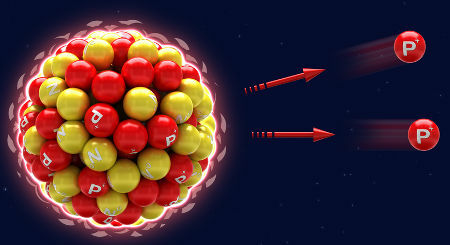Contemporary age is a chronological division of history, comprising the period between the beginning of the French Revolution, with the fall of the Bastille on July 14, 1789, to the present day. The Contemporary Age mainly represents the period of consolidation of capitalism as the mode of production and its expansion across the globe between the centuries XVIII and XXI.
This is another one of the chronological divisions of History based on events that took place on European soil. In this sense, we can even ask: Why the French Revolution is it more important than US independence, since many traits were common to both events?
The main reason is even the fact that it was the European historians who carried out the chronological division of what they considered the History of Humanity. However, the French Revolution represented profound changes in European society at the time and had consequences in other continents, such as the influence on the independence processes of the colonies of Spanish, Portuguese and French.
With the ideals of Liberty, Equality and Fraternity, the French bourgeoisie and other popular sectors of society managed to overthrow the political power of the land-owning aristocracy, which had consolidated its power during the Middle Ages. The conquest of political power was the coronation of an economic strengthening of the bourgeoisie that had started from the end of the Middle Ages, with new forms of production in cities and countryside, in addition to the opening of trade in the Mediterranean and new maritime routes in the Atlantic and Pacific.
The bourgeois political regime, based on the separation of powers between the Executive, the Legislative and the Judiciary, expanded from France during the Contemporary Age, reaching almost all places of the planet. the action of Napoleon Bonaparte it was important for this expansion, as it was also for showing the force of reaction that still held the aristocracy, which managed to retain its power.
But the development of capitalism was not stopped by the aristocracy. The 19th and 20th centuries were the golden age of capitalism with its immense technological advances. Huge cities were built, the population grew exponentially, distances were shortened, to the point that the human being could reach outer space and step on the moon.
Do not stop now... There's more after the advertising ;)
On the other hand, despite all the riches and advances, the Contemporary Age was marked by the maintenance of misery of a large part of the population, even with the creation of immense wealth. This contradiction also generated a series of movements to contest liberal capitalism. The main consequences were the social struggles of the exploited social classes, notably wage workers, against capitalist exploitation.
A striking example of an attempt to overcome exploitation were the revolutions, the best known being the Russian Revolution of 1917. However, the subsequent developments of the revolution represented the reproduction of exploitation, even under the ideological cloak of socialism. This form of social organization, of state ownership and political and social domain in the hands of a Communist Party, was implemented in half of the world's territory.
The 20th century was then marked by this division between a private-based capitalism and a state-controlled social organization. There were still other regimes that marked the Contemporary Age, mainly the so-called totalitarians, represented by fascism and Nazism.
Another disastrous feature of the Contemporary Age was the wars. Countless of them occurred. The biggest and deadliest were the so-called world wars, the First World War, which occurred between 1914 and 1918, and the Second World War, between 1939 and 1945, resulting in the death of over a hundred million people. The science used for military purposes also resulted in the creation of the most lethal weapon ever created, the nuclear bomb.
However, science has enabled improvements in the hygiene and health conditions of the population, providing an increase in life expectancy in most parts of the planet. The succinct presentation of the main characteristics of the Contemporary Age shows the countless contradictory aspects of our society.
By Me. Tales Pinto
Would you like to reference this text in a school or academic work? Look:
PINTO, Tales of the Saints. "What is Contemporary Age?"; Brazil School. Available in: https://brasilescola.uol.com.br/o-que-e/historia/o-que-e-idade-contemporanea.htm. Accessed on June 27, 2021.
Contemporary Age, War between Palestinians and Jews, Oil Crisis, Gulf War, End of Soviet Union, War of six days, war on the Suez canal, war in Cambodia, war in Afghanistan, fall of the Berlin wall (Germany), Bulgaria, Polish

